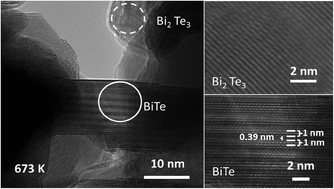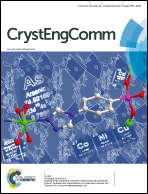Tailoring bismuth telluride nanostructures using a scalable sintering process and their thermoelectric properties
Abstract
Bismuth telluride (Bi2Te3) nanocrystals were synthesized using a wet chemical method, and 1 mm thick pellets of nanocrystals with a 10 mm diameter were made using a high pressure and high temperature sintering (HPHTS) process. The nanostructures were tailored using the sintering process, and the impact of the sintering temperature on the morphological evolution and phase transformation of the pelletized Bi2Te3 nanocrystals were studied using standard analytical techniques. A phase change from Bi2Te3 to BiTe was observed in pellets sintered at high temperatures, and the BiTe phase dominated in the pellets sintered at 773 K. The thermoelectric properties of the as-prepared and sintered pellets were measured. The Seebeck coefficient of the Bi2Te3 nanocrystals increased with sintering temperature, and decreased at higher sintering temperatures (>673 K). Moreover, the power factor of the Bi2Te3 nanocrystals was significantly enhanced by sintering. The variations in the Seebeck coefficient and power factor are explained with a proposed model using the phase and morphological changes in the sintered Bi2Te3 pellets.


 Please wait while we load your content...
Please wait while we load your content...